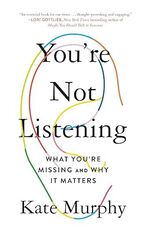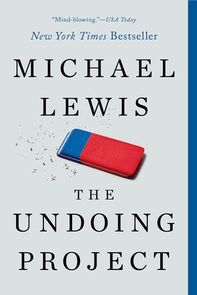Guest Author:
Chuck Rhoades, PhD
CERES Associates, Inc. / Great Bay Community
[email protected]
Teaching Teens About Relationships: A Guide for Teachers, Counselors, and Youth Group Facilitators
Author: Chuck Rhoades, PhD
ISBN-13 978-1-4758-7338-2
APA Style Citation
Rhoades, C. (2024, January 5). Teaching teens about relationships: A guide for teachers, counselors, and youth group facilitators. Rowman & Littlefield Publishers
Buy This Book
https://www.amazon.com/Teaching-Teens-About-Relationships-Facilitators/dp/1475873379
| teaching_teens_about_relationshp_activity_1.pdf |
The book reflects over 20 years teaching a course on Relationships at Portsmouth High School, NH and incorporates other work with youth and young adults at the University of New Hampshire, Phillips Exeter Academy, New Beginnings youth programs, and other schools and agencies in New Hampshire and Maine. I have also taught at the University of New Hampshire, The University of Massachusetts – Lowell, Fisher College and Hesser College. Currently, I am an instructor at Great Bay Community College.
Teaching Teens about Relationships describes how to teach a relationships course for adolescents, including many learning activities and instructional strategies, along with student reactions to it. The course integrated mindfulness work into each session and examined such topics as flirting, jealousy, infidelity, gossip, starting and ending relationships and other ubiquitous aspects of adolescent relationships rarely found in school curricula.
Incorporating student perspectives and experiences was essential to the course’s success. Students created their own material for use in acquiring and practicing relationship skills. Students provided the content to work with activities addressing communication issues, problem areas, sexuality, and the importance of relationships in their lives. They provided an extensive and diverse pool of information and experience that formed the basis of our discussions. This student-centered approach gave me access to their experiences, concerns, values, and strengths. The course gave them access to a safe environment to discuss issues that were in the forefront of their lives.
The book provides guidance for secondary and community college teachers and counselors and professionals working with adolescents in out-of-school settings, such as group homes, agencies, and faith communities. It describes how to develop a course or program series on romantic relationships and the rationale for doing so.
It begins by explaining the importance of establishing and maintaining a safe classroom environment to allow a diverse group of students to participate freely and fully. Readers will learn how to approach each class as a unique experience, tailoring content and methodology to the students in a particular class. There is an emphasis on how to involve the students in determining content.
The book contains over 120 instructional strategies, including experiential activities, dyad and small group tasks, music and artistic expressions, role-playing, writing exercises, and quizzes. It addresses how to include beliefs and theories about relationships, mindfulness and communication skills, starting, building, and ending relationships, sexual decisions, problem-solving, and defining love.
This publication is more than a how-to teach resource about relationships. It is also a story of the experiences of students who took the relationship course. In keeping with the spirit of reciprocity integral to a responsible relationship, readers are encouraged to communicate their thoughts, reactions, questions, ideas, or critiques with the author via email or his webpage.
Note: That discussing relationships can be triggering and should be led by an experienced individual with proper training in the field to address any potential trauma or vulnerabilities that may arise.
Chapter Descriptions
The Introduction explains the antecedents and development of the course. It describes the students who took this elective Relationships course and their motivations for registering. It previews the content of the succeeding chapters.
Chapter 1 details how the initial sessions served to build comfort, trust, and safety among the students so that sensitive issues could be best addressed later in the course. Substantial time is spent on group-building activities, including the identification of group agreements to guide participation and class interactions.
Chapter 2 contains activities and practices that recurred throughout the course. Its primary focus is on mindfulness training, with sample meditations and active mindfulness exercises. It also includes the use of music as an instructional tool, describing how students presented their chosen songs about relationships and led group discussions regarding the songs’ messages.
Chapter 3 takes a careful look at family connections and acknowledges that a range of experiences exists in families of origin and family constellations. How these early experiences might influence future relationships is examined, including a study of developmental stages and attachment theory as ways to help explain and understand the impact of earlier experiences.
Chapter 4 addresses friendships. This involves a look at expectations and realities, good times and not-so-good times. The chapter investigates such student concerns as the role of gossip among peers, joys and troubles among friends, beliefs about friendships, and loneliness, the lack of friends. Some common relationship themes are introduced here, with a look at how friendships might affect romantic relationships.
Chapter 5 begins the focus on romantic relationships by identifying beliefs students bring to the relationships they establish and experience. Students scrutinize their own beliefs and values and those of their classmates and investigate beliefs common to different cultures. Myths and long held beliefs are compared to psychological research. The chapter also notes how the Arts portray beliefs about relationships.
Chapter 6 examines the science of relationships through theories developed from research using the scientific method and conceptual thinking. These theories provide ways to explain how relationships begin and develop, and what factors contribute to problems and breakups. Studying theories hones students’ abilities to reason and reflect and provides tools for identifying and combatting biases.
Chapter 7 focuses on how relationships begin, from first impressions through early interactions to growing connection. Using my own dissertation research, the stages of starting a relationship are explored. Important communication skills and strategies are practiced.
Chapter 8 provides an in-depth training in communication skills. Beginning with practices in developing listening skills, the chapter breaks down the dynamics of the communication process, examining the mechanics in a challenging, rigorous, and innovative training. Youth provide topics and situations to apply their training in lively conversational practices and feedback sessions.
Chapter 9 builds on the basic communication skills by integrating emotional content into practice. Attention to enhancing emotional intelligence to inform their communication processes helps students learn to honor and respect their own and others’ feelings while engaged in conversation.
Chapter 10 utilizes a strength-building approach, seeing problems as learning opportunities for youth. A key feature engages students in creating most of the content by identifying the problems they think are important to work on. Respect for youth’s abilities to work through even the most difficult issues centers this work. The chapter addresses youths’ need for skills to perceive, understand, negotiate and resolve differences. It shows how to help them develop awareness of their own and their partner’s perspectives and to use strategies for dealing with conflict. It addresses difficult problem areas related to infidelity, jealousy, dating violence and abuse.
Chapter 11 shows how to engage students in open and honest discussions of sexual issues. Beginning with a full discussion of the components of the consent process for sexual activities, the chapter shows how to allow and encourage students to identify and assess various experiences of sexual touch according to values, motives, impact of the partners involved and other criteria. As in the chapter on problems, students are encouraged to supply much of the content for discussion. The chapter applies communication skills to sexual topics and provides an opportunity to talk about what youth consider to be a first sexual experience. The chapter includes the use of movies to discuss sexual issues. It ends with students defining what constitutes a healthy sexual relationship.
Chapter 12 addresses endings in relationships and concludes with the ending of the course and the relationship we had built as a class. It looks at why and how relationships end. Once again, pertinent communication skills are included. Special attention is given to ending abusive relationships and the impact of parental separation and divorce on children and youth. The course ends by honoring the students’ participation in this course with a selection of closure experiences.
Other Related Resources
Author website: Chuck Rhoades – Writing, Training, and Consulting on Psychological Health Education
Publisher website: Rowman & Littlefield.
Publication flier: Chuck Rhoades, Teaching Teens Flyer.pdf
Amazon link: Teaching Teens About Relationships: A Guide for Teachers, Counselors, and Youth Group Facilitators - Kindle edition by Rhoades, Chuck. Health, Fitness & Dieting Kindle eBooks @ Amazon.com.
Goodreads link: Teaching Teens About Relationships: A Guide for Teachers, Counselors, and Youth Group Facilitators by Chuck Rhoades | Goodreads
Sex Ed Lecture Series Presentation link: Teaching Youth about Relationships | Sex Ed Lecture Series (square.site)
Psychological Concepts and Figures
Ainsworth, Mary
Allport, Gordon
Bowlby, John
Ekman, Paul, 106
Erikson, Erik
Sternberg, Robert
Abuse
Active listening
Adolescent development
Attachment
Attraction
Bisexual youth
Commitment
Communication
Confidentiality
Conflict
Consent
Contact hypothesis
Emotional intelligence
Family
First impressions
First sexual experiences
Gender
Gender-fluid youth
Gender non-conforming youth
Identity
Inclusion
Intimacy
Lesbian youth
LGBTQ+
Meditation
Mindfulness
Reciprocity
Sexual behavior
Sexual communication
Sexual orientation
Substance use
Transgender
Trauma
Triangular Theory of Love






















 RSS Feed
RSS Feed